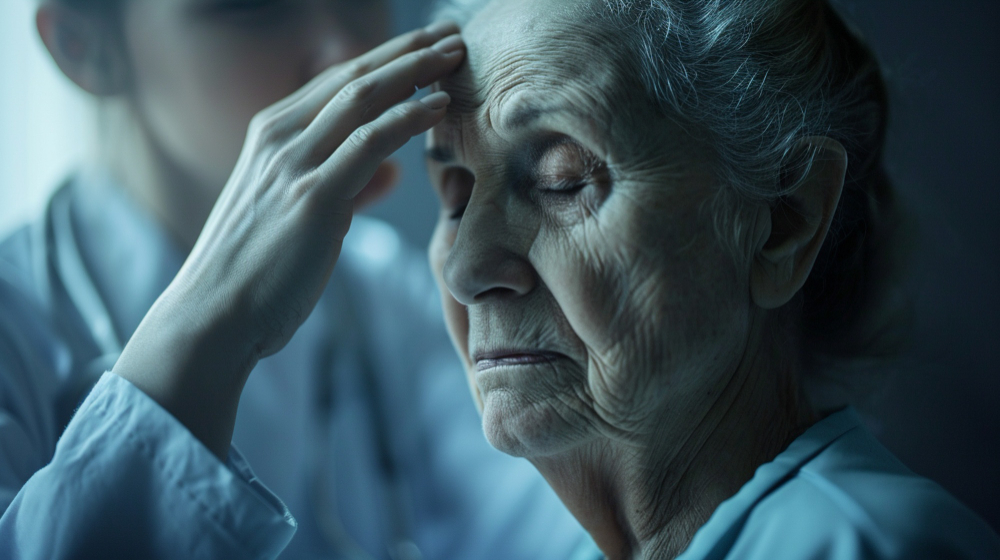Parkinson’s disease is a progressive neurodegenerative disorder that primarily affects movement. It occurs when nerve cells in the brain that produce dopamine, a chemical messenger responsible for coordinating movement, become damaged or die. As a result, individuals with Parkinson’s disease experience a range of motor symptoms, including tremors, stiffness, slowness of movement (bradykinesia), and difficulty with balance and coordination.
These symptoms often develop gradually over time and can vary in severity from person to person. Beyond the motor symptoms, Parkinson’s disease can also cause non-motor symptoms such as changes in mood, sleep disturbances, and cognitive impairment, which can significantly impact quality of life. The underlying cause of Parkinson’s disease is not fully understood, although researchers believe that a combination of genetic and environmental factors may play a role.
While there is currently no cure for Parkinson’s disease, treatment options are available to Assist in alleviating symptoms and enhancing the overall well-being of those affected by the disease. These may include medications to increase dopamine levels in the brain, physical therapy to improve mobility and flexibility, and lifestyle modifications such as regular exercise and a healthy diet. Additionally, ongoing research into the mechanisms of Parkinson’s disease and potential new therapies offers hope for better treatments and eventually a cure.
Causes of Parkinson’s Disease
This disease is a complex neurological disorder whose precise cause remains elusive. While researchers have identified several factors that may contribute to its development, the exact mechanism behind Parkinson’s onset is still not fully understood. One significant aspect is genetics, with studies suggesting that certain genetic mutations or variations can increase the risk of developing Parkinson’s disease. These genetic factors can involve specific genes related to Dopamine regulation, mitochondrial function, and protein processing within brain cells.
However, it’s important to note that not everyone with these genetic predispositions will develop Parkinson’s, indicating that environmental influences also play a crucial role. In addition to genetic factors, environmental exposures have been implicated in the development of Parkinson’s disease. Pesticides, herbicides, and other agricultural chemicals have been linked to an increased risk of Parkinson’s, particularly among those with regular occupational exposure.
Other environmental factors such as heavy metals, solvents, and certain medications may also contribute to the onset of the disease. Furthermore, studies have shown potential links between Parkinson’s and factors like head trauma, rural living, and exposure to certain viruses or toxins. Understanding the interplay between genetic susceptibility and environmental triggers is essential for unraveling the complexities of Parkinson’s disease and developing effective prevention and treatment strategies.
Symptoms of Parkinson’s Disease
Parkinson’s disease is a neurodegenerative disorder that primarily affects movement. One of the hallmark symptoms of Parkinson’s is tremors, which often begin in the hands or fingers and can later affect other parts of the body. These tremors typically occur at rest and may decrease or disappear with purposeful movement.
Stiffness, or rigidity, is another common symptom, which can make it difficult for individuals with this disease to move their limbs freely. This stiffness often affects the arms, legs, and neck, and can cause discomfort or pain. In addition to tremors and stiffness, people with Parkinson’s disease may also experience difficulty with balance and coordination. This can lead to problems with walking, including a shuffling gait or difficulty starting or stopping movement.
Balance issues can increase the risk of falls, which can be particularly dangerous for older individuals with Parkinson’s. These symptoms can vary in severity from person to person and may progress over time, making it important for individuals with Parkinson’s to work closely with healthcare providers to manage their symptoms and maintain their quality of life.
Diagnosis of Parkinson’s Disease
Diagnosing this disease can be challenging, as there is no specific test to definitively confirm the presence of the disease. Instead, healthcare providers rely on a combination of medical history, physical exams, and various tests to make a diagnosis. During a physical exam, the healthcare provider will look for the hallmark symptoms of Parkinson’s disease, such as tremors, stiffness, and slowness of movement. They may also assess the patient’s balance, coordination, and muscle strength.
Additionally, the healthcare provider may ask about the patient’s medical history and any medications they are currently taking. Imaging tests, such as MRI or CT scans, may be used to rule out other conditions that could be causing the symptoms. These tests can help the healthcare provider get a clearer picture of the brain and rule out other possible causes of the symptoms.
In some cases, a DaTscan, a specialized imaging test, may be used to evaluate the Dopamine transporter levels in the brain, which can help support a diagnosis of Parkinson’s disease. However, the diagnosis is ultimately based on a combination of clinical judgment and the exclusion of other possible causes of the symptoms.
Treatment Options for Parkinson’s Disease
Treatment for Parkinson’s disease typically focuses on managing symptoms. Medications are often the first line of treatment, aiming to increase Dopamine levels in the brain or mimic the action of Dopamine. These medications can help improve motor symptoms such as tremors, stiffness, and slowness of movement. However, they may have side effects and become less effective over time.
Surgery might be advised in certain situations to help alleviate symptoms. Deep brain stimulation (DBS) is a surgical procedure that involves implanting electrodes into certain areas of the brain. These electrodes deliver electrical impulses that can help reduce tremors and other motor symptoms. Physical therapy, occupational therapy, and speech therapy can also play important roles in managing Parkinson’s disease. These therapies can help improve mobility, reduce stiffness, and enhance communication skills, ultimately improving the quality of life for individuals with Parkinson’s disease.
Living with Parkinson’s Disease
Living with this disease can be challenging, but there are several tips and lifestyle changes that can help manage the symptoms and improve the quality of life. Regular exercise, such as walking, swimming, or yoga, can help improve flexibility, balance, and overall mobility. It can also help alleviate some of the stiffness and tremors associated with Parkinson’s disease.
A balanced diet rich in fruits, vegetables, whole grains, and lean proteins can also help manage symptoms and maintain overall health. Additionally, it’s important to stay hydrated and get plenty of rest to help manage fatigue, which is a common symptom of Parkinson’s disease. In addition to lifestyle changes, there are also several support resources available for those living with Parkinson’s disease. Support groups can provide emotional support, as well as practical tips and advice for managing the disease.
Occupational therapy and speech therapy can also be beneficial for managing the symptoms of Parkinson’s disease. It’s important for individuals with Parkinson’s disease to work closely with their healthcare and collaborate with your healthcare team to create a thorough treatment strategy tailored to meet your individual needs and symptoms.
Research and Progress
Research into Parkinson’s disease has seen significant progress in recent years, particularly in understanding the underlying mechanisms of the disease. Scientists have identified several genetic and environmental factors that contribute to the development of Parkinson’s, leading to more targeted therapies. One exciting area of research is the development of treatments that focus on neuroprotection, aiming to slow or halt the progression of the disease.
Additionally, researchers are exploring the role of inflammation and the gut-brain axis in Parkinson’s, which may lead to new avenues for treatment. In terms of treatment, there have been advancements in deep brain stimulation (DBS) therapy, which can help manage symptoms such as tremors and rigidity. Researchers are also investigating the potential of stem cell therapy to replace damaged cells in the brain and restore function.
These advancements offer hope to the millions of people living with Parkinson’s disease and their families, highlighting the importance of ongoing research in finding a cure.
Conclusion
This disease is a complex neurological condition that can significantly impact a person’s quality of life. It is characterized by a range of symptoms, including tremors, stiffness, and difficulty with movement. While there is currently no cure for Parkinson’s disease, there are several treatment options available to help manage symptoms and improve the quality of life.
These include medication, surgery, and therapy. It is also important for individuals with Parkinson’s disease to maintain a healthy lifestyle, including regular exercise and a balanced diet, as this can help to manage symptoms and improve overall well-being. For those living with Parkinson’s disease, it is important to remember that you are not alone. There are many resources and support groups available to help you navigate this journey.
It is also important to stay informed about the latest research and advancements in the treatment of Parkinson’s disease, as this can help you make informed decisions about your care. Remember to take each day as it comes and to focus on what you can control. With the right support and management strategies, it is possible to live a fulfilling life with Parkinson’s disease.
FAQ
What is Parkinson’s disease?
Parkinson’s disease is a progressive nervous system disorder that affects movement. It develops gradually, often starting with a slight tremor in one hand, and can cause stiffness or slowing of movement.
What are the symptoms of Parkinson’s disease?
Symptoms can vary, but common ones include tremors, stiffness in the limbs, slowness of movement, and impaired balance and coordination. Other symptoms may include speech changes, writing changes, and difficulty with fine motor tasks.
Is Parkinson’s disease hereditary?
While most cases are not directly inherited, having a family history of the disease can slightly increase your risk. Some genetic mutations have been linked to Parkinson’s, but they are rare.
How is Parkinson’s disease diagnosed?
There is no specific test for Parkinson’s disease. Diagnosis is based on medical history, symptoms, and a physical and neurological examination. Sometimes, imaging tests such as MRI or CT scans may be used to rule out other conditions.
What treatments are available for Parkinson’s disease?
Treatment aims to manage symptoms and improve quality of life. Medications such as levodopa, dopamine agonists, and MAO-B inhibitors can help manage movement symptoms. Physical therapy, occupational therapy, and speech therapy can also be beneficial.
Can Parkinson’s disease be cured?
Currently, there is no cure for Parkinson’s disease. However, treatments can help manage symptoms and improve quality of life. Research into potential cures and better treatments is ongoing.

